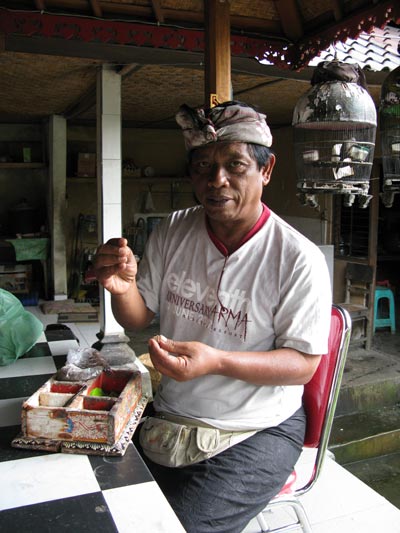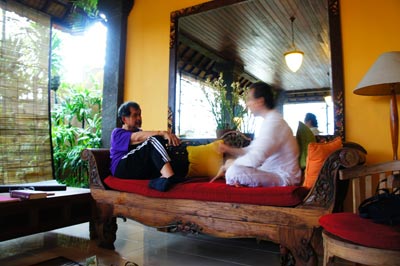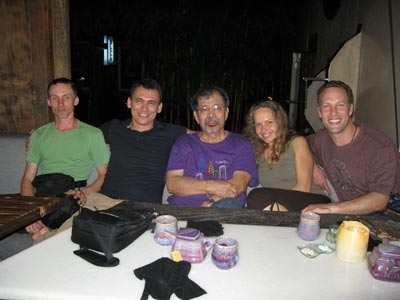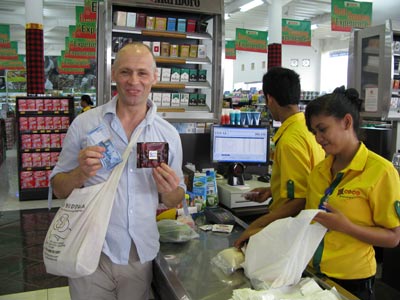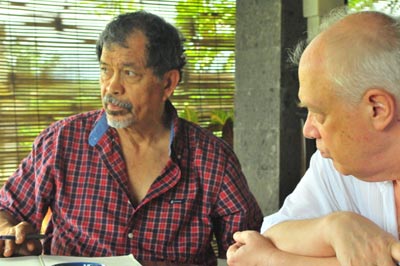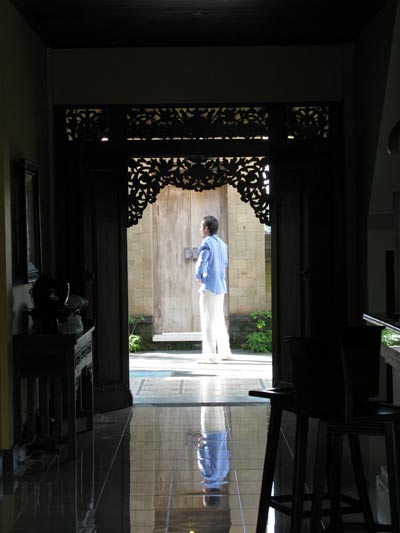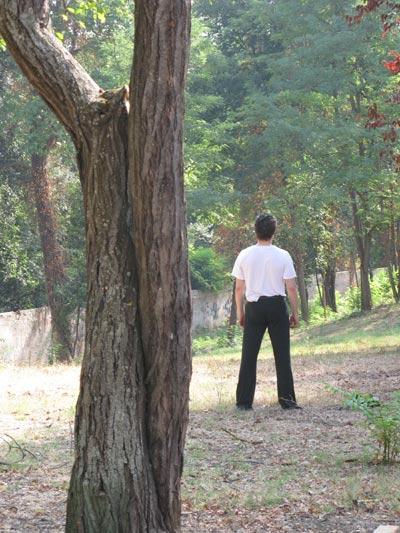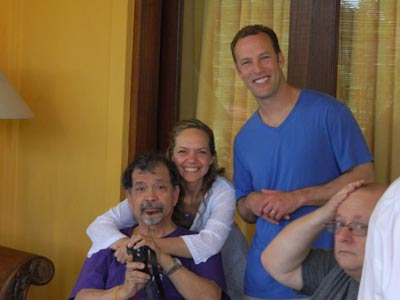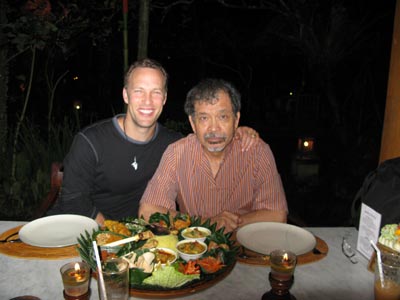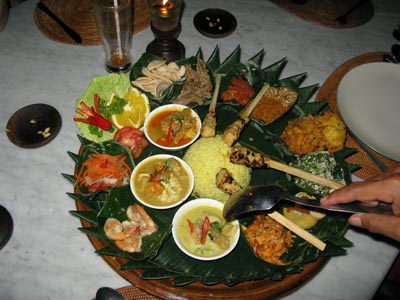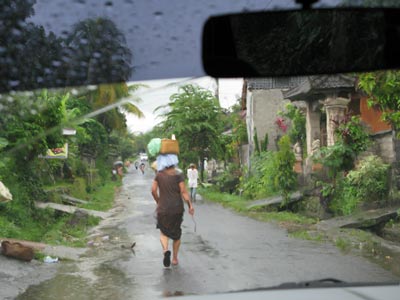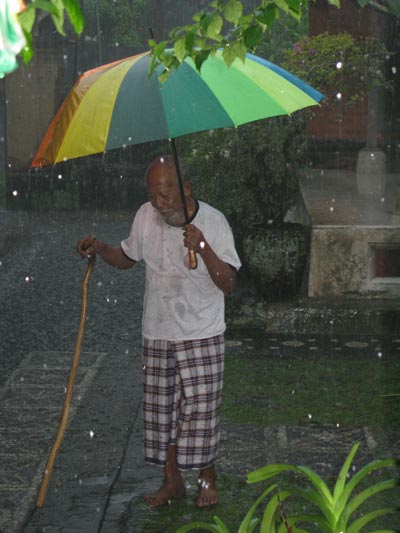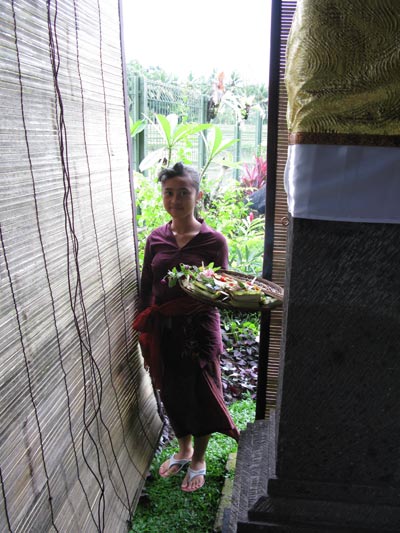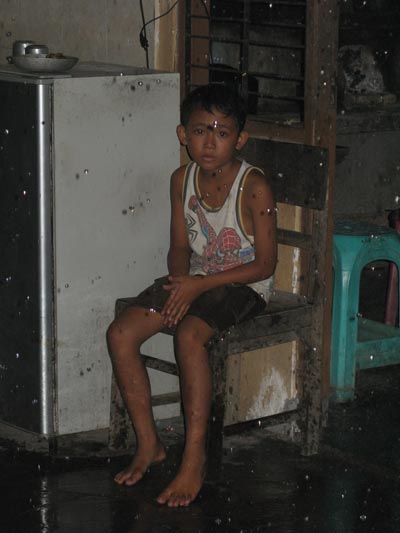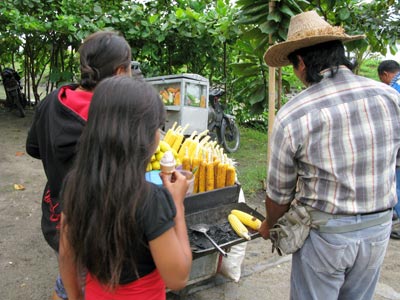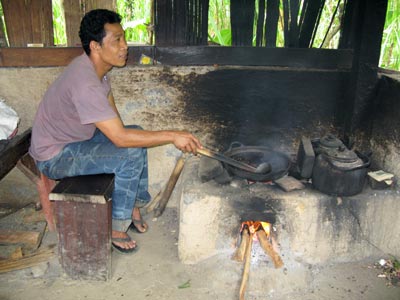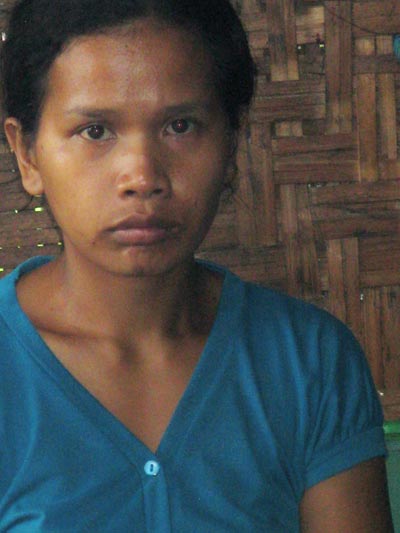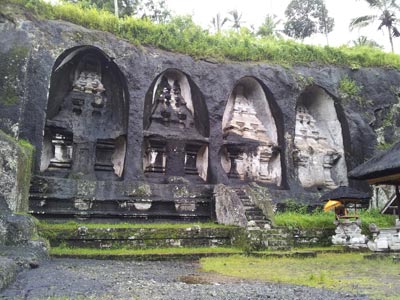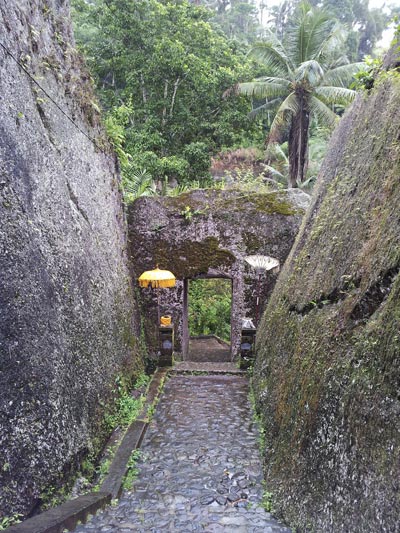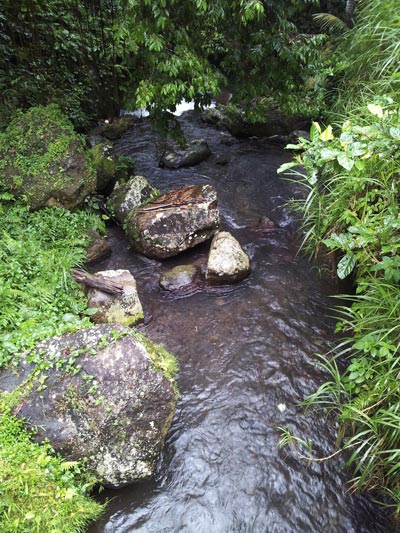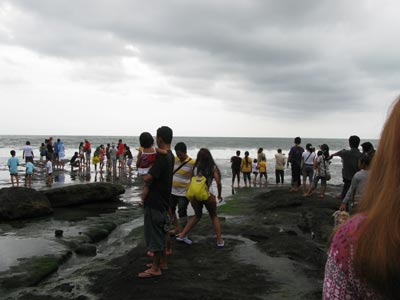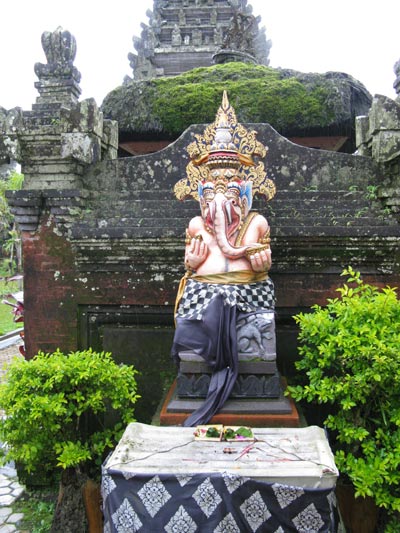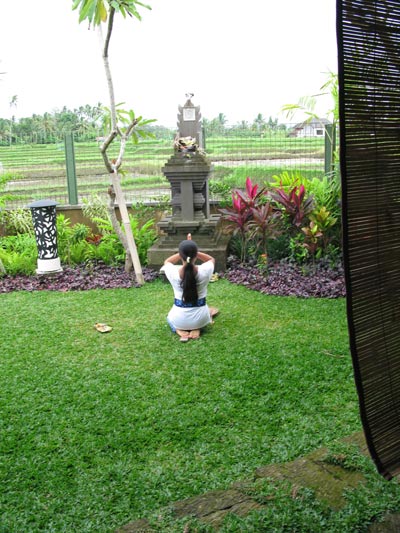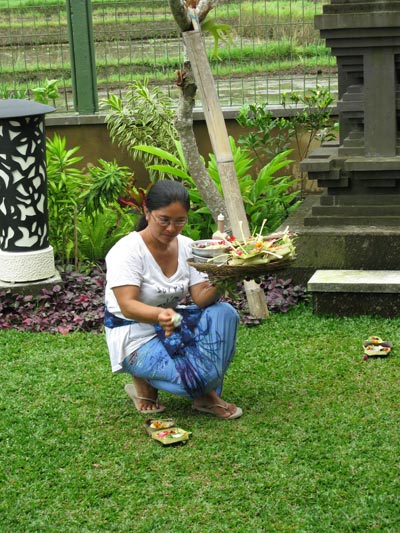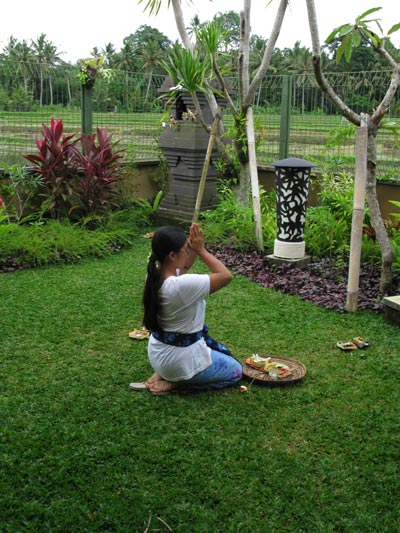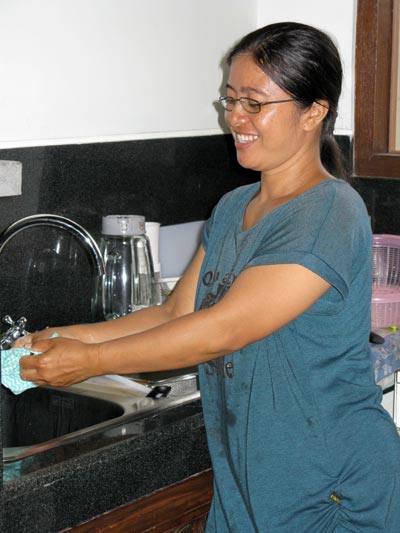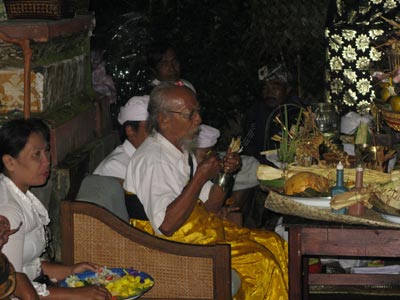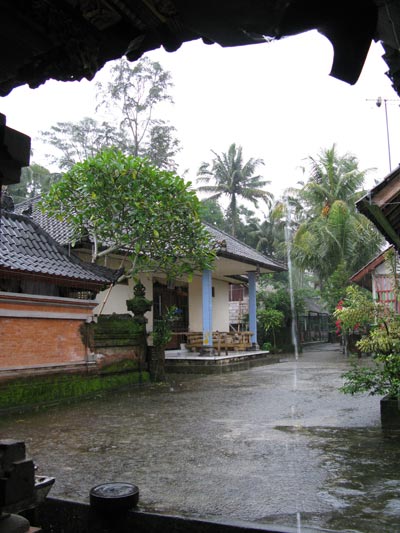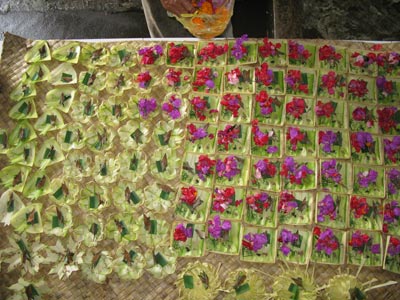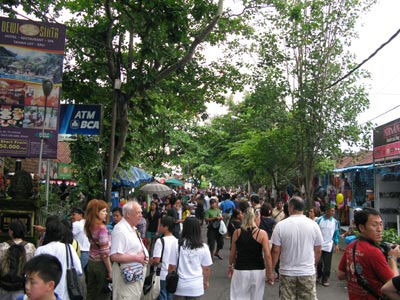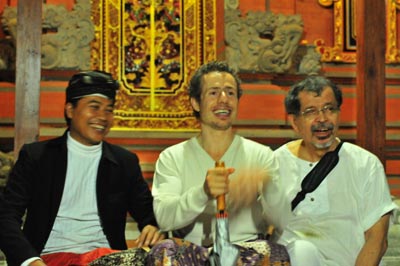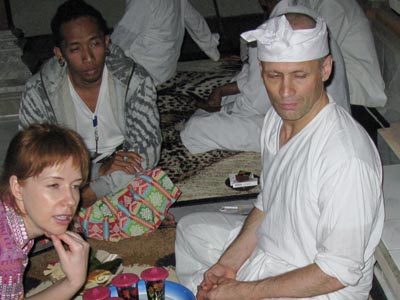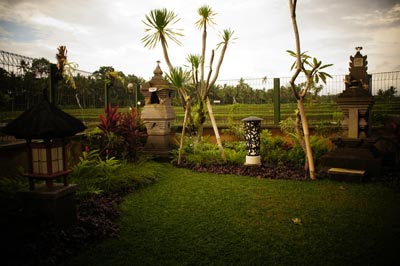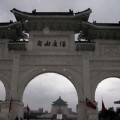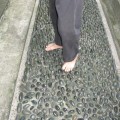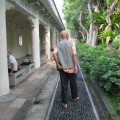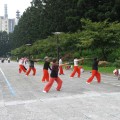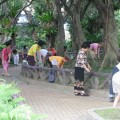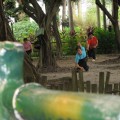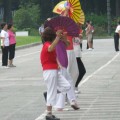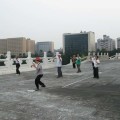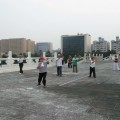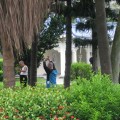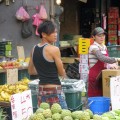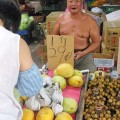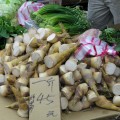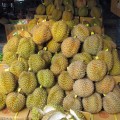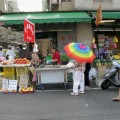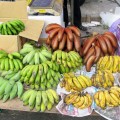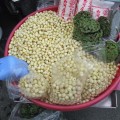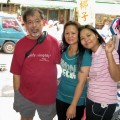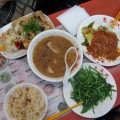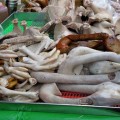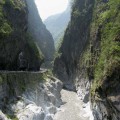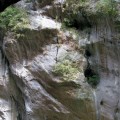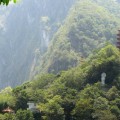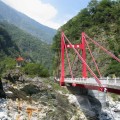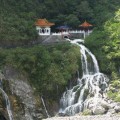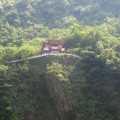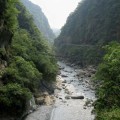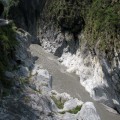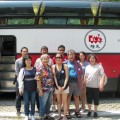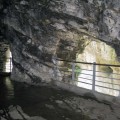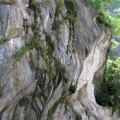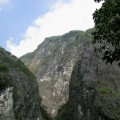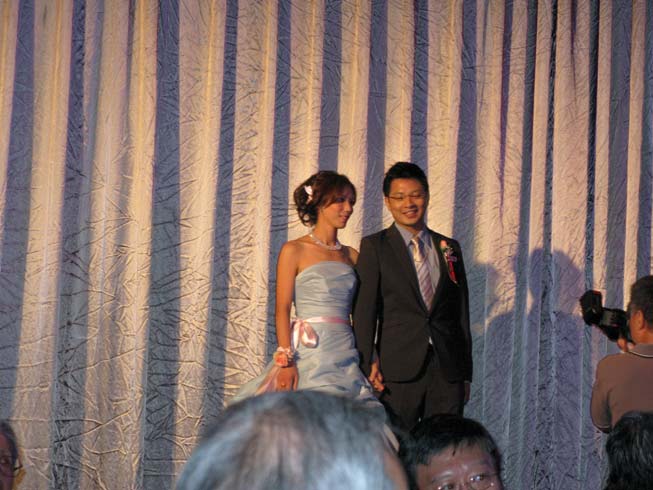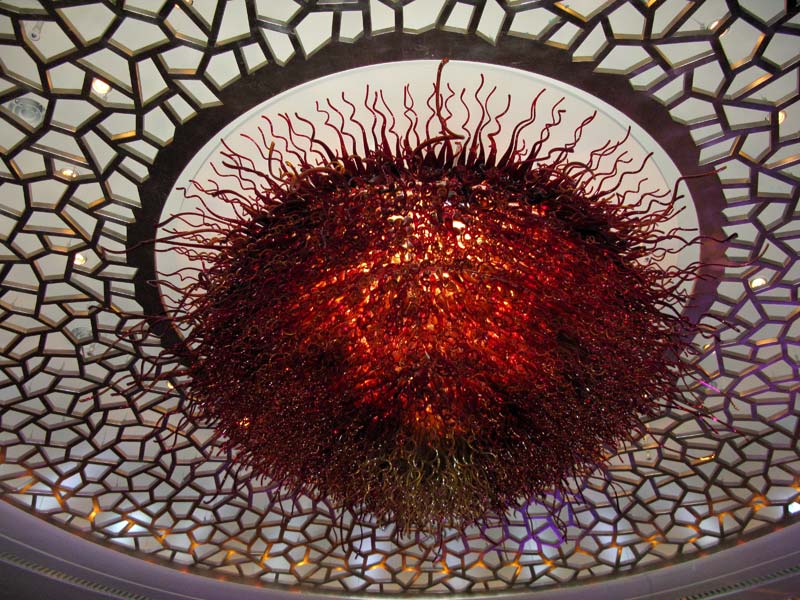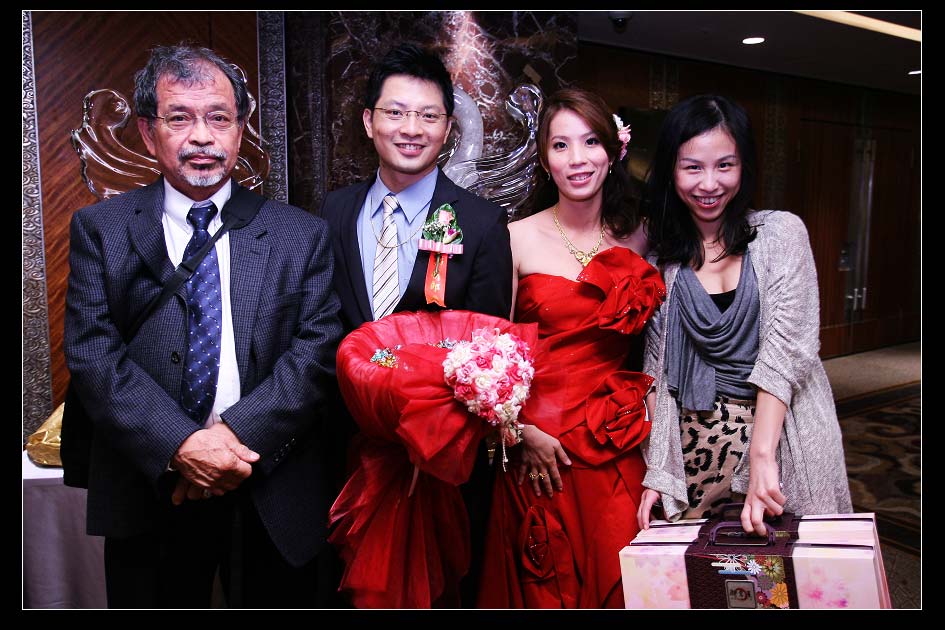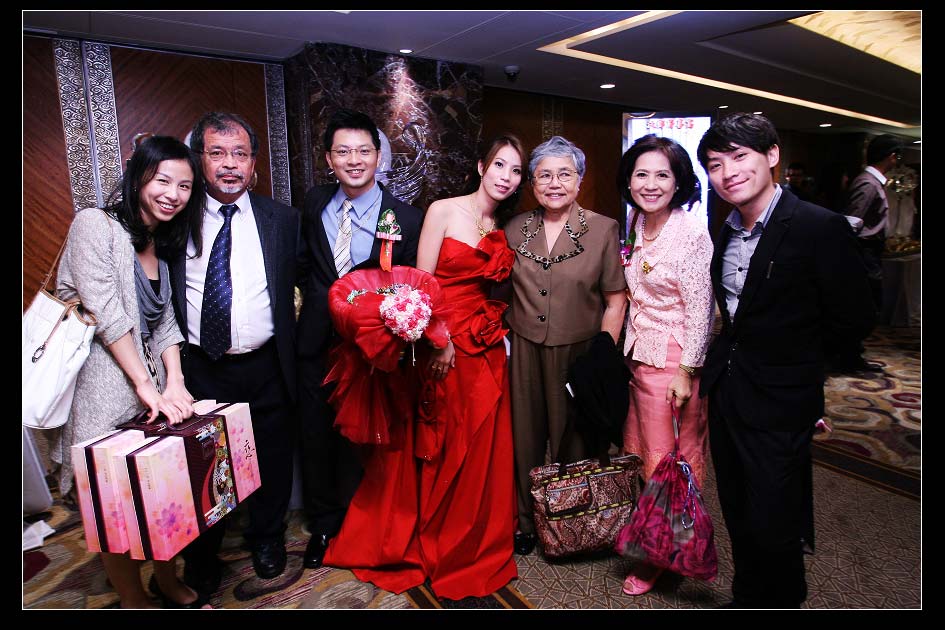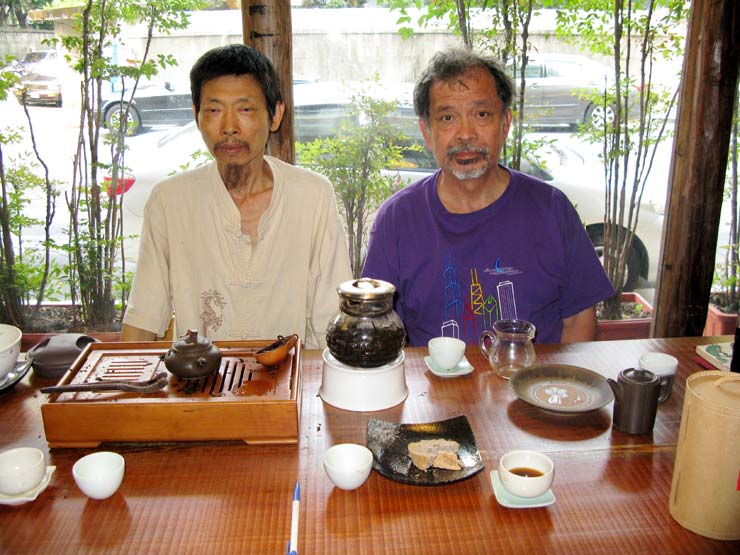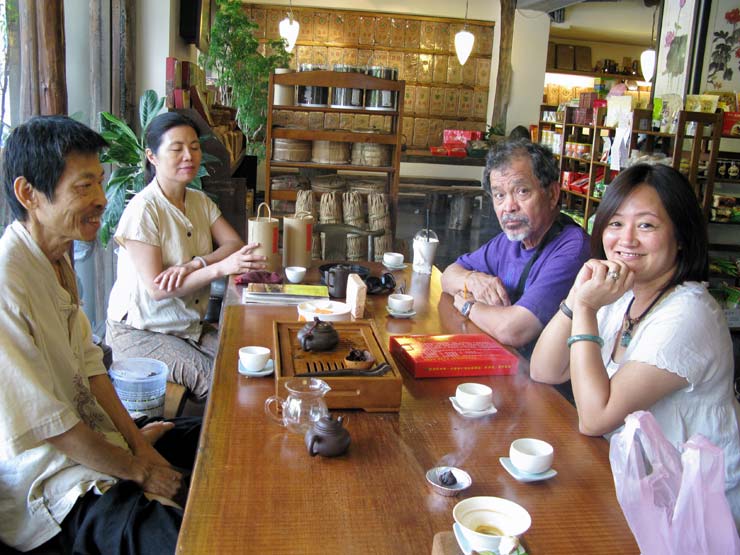January 21, 2012.
We were sitting on the balcony this morning in Sawah Indah (Beautiful Rice Fields) when David Verdesi* said that Ian Baker, the writer and explorer, is arriving in Bali. In February 2006, Ian was in Bangkok and was supposed to join us in Java en route to Borobudur to do a documentary for National Geographic. David and I were visiting John Chang, the famous Magus of Java, at the time. I did not know anything about Ian Baker, but David told me stories about him. David also had an autographed copy of Ian’s book “The Heart of the World: A Journey to the Last Secret Place.” The Preface by the Dalai Lama says it is the search for the lost land, the legendary Beyul Pemako. That’s “the hidden land shaped like a lotus,” located somewhere in indescribably difficult terrain in no- man’s land in the borders of China, Tibet and India. No doubt a fascinating story and from the blurb Ian’s exploration sounded better than an Indiana Jones adventure. Hey, the search for Shangri-La is an ancient and continuing human obsession, isn’t it? We waited for Ian … and waited and waited. Meantime, in the idle hours in Java, I read the book, arguably one of the best in the genre of travel literature, up there with the works of British writers Colin Thubron, Laurence Durrell and Simon Winchester. Finally, we got the news that Ian could not come because his mother took sick in Thailand. When I got back to the US, I bought myself a copy of the book from Strand, my favorite bookstore, south of Union Square in Manhattan. I read the book all over again page after page through the detailed geography, impressive research and felicitous prose. I learned that there was a National Geographic DVD of the exploration, but I could not find a copy. I bought Ian’s other books — “Tibetan Art of Healing” and “The Dalai Lama’s Secret Temple: Tantric Wall Paintings from Tibet” – indispensable keys to Ian’s oeuvre. The former is an excellent source of information about Tibetan healing, with extraordinary paintings and sketches of different techniques, the model of the body and different organs. The latter particularly is rich in the materials of the esoteric meditation called “dzogchen” (the teachings of the Great Perfection) and probably more than any other book shows perhaps for the first time the mysterious and mystical wall paintings that are supposed to guide the Dalai Lama on his road to enlightenment. It is sad to read that His Excellency, the present Fourteenth Dalai Lama, because he had to escape from Tibet, was unable to set foot on the Lukhang (Lu/serpent deities, khang/temple)/Serpent Temple in the middle of the lake behind the Potala Palace. Contemplating the murals – in reality a veritable manual of high Tibetan Buddhist meditation – during the Dalai Lama’s retreat appears to have been an obligatory ritual. ** They were painted by mysterious artists after the Fifth Dalai Lama (1642-1682) had mystical visions apparently due to his encounter with a Lumo (female Naga).
Since I arrived here in Bali on the evening of January 5, 2012 we have tried to avoid the tourist route, focusing on the training and visits to the masters. It was a good idea that David rented a house at the end of a road leading to the rice fields outside the town. We’ve had the benefit of quiet and privacy and a pleasing landscape, with a view of the coconut groves and the distant volcano.
The ceremonies have really been quite moving. The big initiation attended by the community was itself a magical occasion. I thought of how the community was bound by this faith, united in the charisma and qi of the old master, and in the culture and religion of the islands. It was, I realized, something that was missing in a westernized culture.
Sometime when we first visited at his village home and temple, the old priest asked me, through Agung the guide and translator, if my country had the same tradition. I said, No. It was difficult to explain that my country, the Philippines, was colonized, first by Spain (Roman Catholic) and then by the US (Protestant), and took a different historical route, that we have been westernized, that among other things, we have Christian processions and masses instead of the ritual Hindu dances, that we Have/had a western education …
Last time we – David, Pierre, Ana, Nikolay, and me – went to the village an hour by car from Ubud, the old shaman gave all of us his blessings. As we said goodbye, the old man held both my hands in his and said, “Shantih, Shantih, Shantih.” It took me by surprise and touched me deeply. He often took particular attention to hold my hands on the four occasions we visited him. The old shaman had become a familiar figure after our third visit. I had sat with him as he wrote the mantras and demonstrated mudras of his lineage, heard the explanation for the rituals that he conducted.
It was different in many ways from my encounter with the Magus of Java John Chang who had this overwhelming power called yin-yang gong or the mating of the yin and yang in the dantian that resulted in a strong electrical current. Weda, his nephew, commented to me that the power was not spiritual. I was of course surprised to hear him say that and I thought about it for a long time and I concluded that I wanted something else … as I expressed in the concluding paragraphs of my essay “Thunder Path in Huangshan” — I wanted something else … peace and love and clarity and stillness. It is what I truly believe in. Here, in Bali, I’ve seen it in the animist Hindu culture. There is an milieu here that is harmonious, soft and gentle … I found that they have a faith in the sacred. I feel that my belief — as expressed in the essay “Honoring the Sacred” — has finally found people who are animated by it.
There are obvious similarities, of course, between Bali and the Philippines — in the language for instance. It is close to Capampangan, the language of my region north of Manila. We share the same or almost similar words – nasi/rice, bulan/moon, batu/stone, masok/entrance, ribu/thousand, dua/two and so many more. We also are similar in racial and physical characteristics. But at the same time, I notice the big differences in the religion and culture. The Philippines is westernized and Christian. It is a simplistic quotation, I admit, but the remark, “The history of the Philippines is 300 years in a Roman Catholic Convent and 50 years in Hollywood” says a lot. Despite the years of foreign occupation and internecine warfare, Bali’s culture seems intact: dances, movements, martial arts, arts and crafts, statuaries. They know their sacred and religious texts.
I’ve tried to articulate my thoughts and mixed feelings about my country where sadly, there are times when I feel like a misplaced stranger in my own home.
January 16, 2012.
I have just been through the worst nightmare of a traveler — losing his credit/debit card. I had brought what I thought was sufficient cash for the time I will be in Bali, but turned out there were other unexpected expenses when I arrived. So I decided to ask my son in the US to inform the bank that I am in Bali and will probably use the card. After all the procedures he went through, I could not find the card. I emptied my wallet and my bag. It was nowhere to be found. I drafted an e-mail to my son but did not send it hoping my card will turn up, after all. We were at the performance of the Ramayana, and I tried to focus on the show, but my mind was on the credit card. I recognized some of the characters — Rama, Sita, Hanuman, Garuda … David, my host, took me home and he and a few other companions proceeded to another shamanic event, a trance dance, in town. On the off-chance the card was in my bedroom, I went upstairs and turned the bed sheet over. Lo and behold, it was there staring at me. It was the most beautiful sight in the world at that moment. So I am here, alone, in the big house listening to Saint Saens’ Carnival of the Animals and the cacophony of the frogs and the crickets and nursing a cup of hot espresso coffee.
In 2006, I was invited by David to Java to see the famous Magus. (You can look him up on youtube for his incredible demo and read about him on my website under “Thunder Path in Huangshan.” Kosta Danaos has written about him in “The Magus of Java: The Teachings of an Authentic Taoist Immortal”. Laurence Blair has also mentioned him in a book “Ring of Fire: An Indonesian Odyssey.” I read the book in Bali. ) After close to a month, David left for Thailand. Weda, a nephew of the Magus, invited me to go to Bali with him. He said we were going to meet a strange shaman, a shape-shifter who could change into an eagle right before your eyes. I had heard about something like it from a friend who had seen it in Malaysia. Of course, I was skeptical about it. Anyway, I was supposed to check into a beach hotel, but when we arrived in Bai, Weda ordered the driver to take us to the home of his relatives in Kuta. His aunt and her husband were in the pool. There was construction (of a museum for batik, silk and other arts and crafts I heard later) going on. There were several houses in the compound. The man emerged from the pool, came up to me, and said, “Mr. Navarro, it will be an honor to have you stay with us.” I did not know what Weta said in Bejasa but I was surprised of course and did not know what to say, except give my thanks. I was given the use of a house, a car and a driver. Weda was told to sleep in the library. I said, he can stay with me.
One of the places I was advised to visit was a Hindu temple where an old Hindu healer was in residence. He was doing healing when we saw him. There were about 10 foreign guests, apparently students of his, who sat in a semi-circle in front of him as he took them on one by one. He used a small and thin foot-long wand to poke at different parts of the body. I recognized them as acupuncture points. The patient would grimace and/or make a sound as the old man pressed this or that spot. And then it was my turn. I noticed that the probe he used was a wooden stick, shiny from use and in the shape of a snake. He spent about 10 minutes exploring some of the famous acupoints as I moaned and groaned from the pain. When he was done, I went back to my seat. “You have sinus problem,” he remarked. “Yes,” I said. “Do you want me to treat you?” “Yes,” I said. Upon which, he went to his desk. With his back turned to me, I could not see what he was doing. He came up to me and said, “Close your eyes.” I closed my eyes. Then, he spit on my face. “Keep them closed for 10 minutes,” he ordered. Everybody laughed. As the saliva dripped down my face, I smelled the odor of peppercorn and I felt a clearing in my sinuses. It was, I thought, a different healing modality! Something I or anybody else, no matter what the intention, could not have done in the US.
In retrospect, I realized that it was an approach that was based on a different paradigm. Each healing system has almost invariably its own foundation, its own reality and rationale … its own perception of the body. So the diagnosis and treatment are different too.
Remember that there is usually a payment required if you are going to see a healer. Inquire ahead of time how much it is. If none is required, it is good practice to make a donation just the same. I do not know if it is current, but here is information from the business card of the healer I saw in 2006:
Name: Tjokorda Gde Rai
Puri Negari
Singapadu Tengah – Sukawali 80582
Gianyar – Bali – Indonesia
Telp. (62 – 361) 294585
January 18, 2012.
Yes, I am still enjoying Bali. Most of my time is dedicated to the training. No touristing for me here. Whatever extra time we have is spent attending rituals and meeting masters. It is an incredible place, especially if you have connections with the community and if you live outside the city. David rented a house adjacent to the rice fields at the end of the road. When I wake up, I can hear the gecko barking in the dark and the roosters announcing the sunrise. I go to the terrace and see this young woman Man Sri, our help in the house, looking like an ancient priestess, long hair flowing down to the small of her back, carrying a basket of flowers and fruits and palm leaves, her daily gift to the land — coconuts, bananas, rice, the rivers and lakes and mountains — and the gods and ancestors and she goes on bended knees, palms together above her head, and chants quietly facing the spirit house. “There’s nothing that is not sacred on this island,” David said. When you drive an hour to the hinterlands, past the rice terraces and the farms, the small villages, and the coconut and banana groves, past the quiet temples and deep valleys, and the wood and stone carvers, you’ll see a queue of women on certain holy days carrying baskets on top of their heads, walking to a sacred temple. It was one of the first scenes that astonished me the first time I visited Bali with Weta in 2006.
I was struck by the natives’ familiarity with their culture and religion. Even our taxi-driver, whom I invited to dine with us, knew the religious texts and the gods. He talked about Arjuna and Hanuman. He was like a scholar giving a lecture on his academic specialty. It was quite an experience listening to him. It was like hearing an ordinary man in China talking about Sun Wukong/ Monkey or the Romance of the Three Kingdoms or a waiter in Greece telling stories from the Odyssey or Iliad. I am happy that the big corporations like Walmart haven’t gobbled up the island and its arts and crafts — batik and silk industry, singing bowls and bells, statuaries and woodwork — and dumped mass- produced and consumer goods Made in China. Watching the performance of the Ramayana, I was impressed with two small girls dancing the legong, a long choreographic number, replete with different stylized movements. They must have trained for a long time. I can just see them emerging later as popular folk artists or national treasures. NB: I did not see any McDonald’s in Ubud or anywhere else in Bali, but I saw one somewhere on one of our excursions to the beach. It had the familiar (and vulgar) arch standing 2 stories high!
January 23, 2012.
Ian arrived at the house yesterday. I was in downtown Bali having my camera batteries re- charged at an electronics store. When I got back to the house 3 hours later, Ian was still there waiting for David. I said hello and he introduced me to his companion Rob. I told him that we were supposed to meet in Java in February 2006. He could not remember. Instantly Ian and I fell to talking about what we were doing: He was researching Tibetan yoga for his new book and was going to interview David. I said I was studying Lei Shan Dao with David and practicing Traditional Yang Family Tai chi chuan. When David came down, we went to a fancy French restaurant, ordered our dinner, and as we settled down, Ian asked David to answer some questions. We listened to David’s mesmerizing talk about Tibetan yoga, lost secrets, nei dan/internal alchemy and the incredible masters, what had happened to his Chinese connections, the Huangshan hermit Xuang Kong, Wang Liping of the “Opening the Dragon Gate” fame and the Magus of Java John Chang. Rob talked about powa, the Tibetan Buddhist technique of transference of consciousness. Ian mentioned the wai dan/external alchemical formulas of some masters he had studied with on his explorations in remote places in Asia. We swapped information back and forth, bantered, laughed and guffawed. The 12-odd tapas-like dishes materialized and disappeared. (I am not familiar with French cuisine. Is there a name for those small servings? ) One was flavored with fresh jackfruit, another was raw squid with the lingering taste of an elusive herb, still another was tuna tartare with the piquancy of a tropical spice and yet another was a fish native to Balinese waters. I should have taken notes, but I enjoyed the conversation so much, I forgot to record anything, not even with my still-functioning camera. It was the most engaging, memorable and informative conversation I’ve had within memory. Ian said it was like the movie “My Dinner with Andre.” The dinner was also the most expensive I have ever had in my 72 years on the planet. But hey, I had no regrets! It was all worth it. Nobody in the world could have contrived the night in his imagination.
Later, we took Ian and Rob to their hotel. We promised to get together again. But it wasn’t meant to be. Nicolay and Marina, the Russian couple famous for their psychic research, had invited me to tour Bali with them. Meanwhile, David had to leave for another island to see a master with incredible powers. And I did not know where Ian and Rob were.
Post Scriptum:
January 24, 2012.
Just before I left for the airport for the flight back to JFK Airport in NY, David called. He was quite excited by his new discovery and experience. He arrived at his destination in the evening during the celebration of the Festival of Shiva, a huge holy day in Indonesia. He had not eaten anything and was mustered into an overnight sitting meditation that ended at dawn. The master had given him a powerful initiation, zapped his dantian with unbelievable heat, and basically adopted him. It was all he could report at the time, he said. There were certain important details he could not talk about on the phone. And then he had to go because he was being called back for the continuation of the training. It had been going on for the last two days, non-stop. I wondered if he had eaten yet!
Wayan, the taxi-driver, picked me up early. Nikolay and Martina hitched a ride to town. I dropped them off at a museum. Meeting them was another serendipitous synchronicity in my life. It was a gift that I did not expect. We attended shows and initiations. We participated in the fire rituals. We had breakfasts together. We visited temples and museums. We spent more time together than I had anticipated. In fact, we spent more time with each other than anybody else. Who knew that I would be able to study (and see a psychic phenomenon) with these exceptional Russians when I came to Bali? As arranged by David, Nikolay gave me lessons and I gave him treatments over a period of two weeks. When we said good-bye, I knew I would miss them. When I hugged Nikolay, I said: “My friend and teacher.” He almost simultaneously said, “My doctor.” When Marina and I hugged each other, I felt her gentleness and stillness. There was nothing else to say.
On the long drive to the airport at Denpasar, I remained quiet, deep in contemplation of my “fortune,” what I had gone through and experienced and the wonderful people I had encountered in Bali. Wayan stopped at a batik store. I picked up some sarong and a piece of woven batik material Ava, my granddaughter, asked me to bring. At 11 she designs and sews her clothes.
I treated Wayan to dinner at a restaurant, one where you could sit barefoot on colorful cushions at low tables and watch the fish in the pond. He ordered fried rice/nasi goreng while I had a deep-fried fish and spicy pickle. We slowly ate and nursed our Indonesian beer. There was nobody else around. He hummed an Indonesian tune. He told me that many people would come to this place with their families on weekends and holidays. They would fish in the pond and grill what they caught. I asked Wayan about his family, how were his kids doing in school. He gave me the usual answers: they were doing well. I thought of the cultural context of his remark. I sensed the stoicism born of his awareness of karma. In some societies, people prefer not to say they are doing very well – or that their daughter is beautiful or son handsome — because it might bring down the anger or jealousy of the gods on them. Sometimes they won’t say the truth about their life because of pride or a sense of privacy. I asked him to write his address in my journal so that we could keep in touch.
When we reached the airport, I asked Wayan how much I owed him for the limousine service. He said in his halting English, “Anything you like.” When he picked me up from the airport on my arrival, he charged me the equivalent of $30 or $40. It was actually cheap considering that the airport was very far. He explained that he waited a long time because of the rain and the delayed luggage. He was usually specific about the fee – often between 300,000 and 400,000 Rupiah — when he took us on our expeditions around the island. But for the first time, I got a vague answer. I felt that he and I had crossed a boundary in our relationship.
February 15, 2013.
There’s a 13-hour difference between Bali and Pennsylvania. It took me a while to recover from jet lag. I preferred Singapore Airlines or Thai Airlines, but I could not book my flight with them. I had to take Qatar Airlines through Travelocity … and it was very expensive, perhaps because I decided to go to Bali only two weeks ahead. It took about 30 hours, including layovers, to get to Denpasar International Airport in Bali. JFK to Doha (approximately14 hours plus 8-hour layover), Doha to Singapore (11 hours and 2- hour layover), Singapore to Bali. From Denpasar back to JFK was the same route, except the layover at Doha was reduced to 3 hours. I arrived at JFK at about 2 pm. Between customs and immigration and my luggage, I missed the 3:30 TransBridge Bus to PABT in NYC. I had to wait for the 7:30. By the time I got home and settled down, it was past midnight.
*For more information about David, go to www.davidverdesi.com
** Caveat: In his introduction to the book, HH the Fourteenth Dali Lama Tenzin Gyatso says: “Originally, the Tantric practices illustrated by these murals were revealed only after years of study and meditation under a qualified teacher. Without understanding the context of compassion, the awakening mind and the emptiness of inherent existence within which they function, the methods of Dzogchen and the Highest Yoga Tantra could easily be misunderstood. Nevertheless, I believe that these paintings can be a source of profound inspiration even for those who have had no previous exposure to Tibetan Buddhism.”
